
In Vitro Cytotoxicity Test for Medical Devices
The in vitro cytotoxicity test is an experiment conducted under ex vivo conditions to simULate the biological growth environment. It detects cell lysis, inhibition of cell growth, and other toxic effects that occur when medical devices and biomaterials come into contact with body tissues.
After evaluating the physical, cheMICal, processing performance, and appearance of medical devices, manufacturers need to perform a biocompatibility assessment according to the relevant ISO standards to minimize the risks associated with the devices. The in vitro cytotoxicity test is one of the most important indicators in the biological evaluation system of medical devices and is a mandatory step before clinical application of medical devices and biomaterials. For example, disposable medical face masks, medical sodium hyaluronate dressings, dental implant guides, disposable sterile sampling swabs, disposable surgical gowns, disposable minimally invasive dilation kits, and medical nebulizers all require cytotoxicity testing to assess their safety.
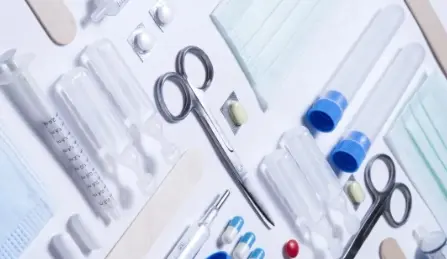
Purpose and Significance of Cytotoxicity Testing
Purpose:
To assess the potential cytotoxic reactions of medical devices and biomaterials and pREDict the tissue and cell response when applied to a biological organism. Through in vitro cell culture techniques, this test detects cell growth inhibition, functional changes, lysis, death, or other toxic reactions upon exposure to the test materials.
Significance:
This test provides a quick, economical, and convenient method for screening the cytotoxicity of bulk test samples. It serves as a prerequisite for animal testing and provides critical assurance for the development and application of new medical devices and biomaterials.
Testing Standards
- GB/T 16886.5-2017 Biological evaluation of medical devices – Part 5: in vitro cytotoxicity tests
- ISO 10993-5:2009 Biological evaluation of medical devices – Part 5: Tests for in vitro cytotoxicity
- GB/T 14233.2-2005 Test methods for medical infusion, blood transfusion, and injection devices – Part 2: Biological test methods
- YY/T 0127.9-2009 Biological evaluation of dental medical devices – Unit 2: Test Methods – Cytotoxicity test: Agar diffusion method and membrane diffusion method
Introduction and Selection of Cytotoxicity Test Methods
The in vitro cytotoxicity test is versatile and can be applied to the evaluation of various medical devices and biomaterials. The test is primarily divided into three types: elution test, direct contact test, and indirect contact test.
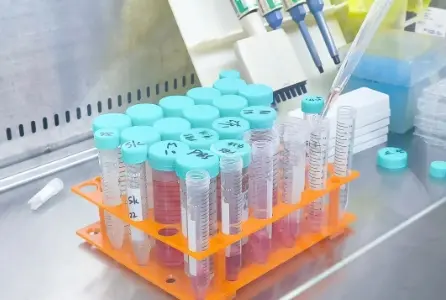
The choice of method depends on the material of the medical device and its interaction pathway with the body. When multiple testing methods are available for a specific evaluation, factors such as the principle of the test, sensitivity, selectivity, quantifiability, reproducibility, suitability of the test materials, and limitations should be considered. For example:
- Elution test is suitable for detecting the toxicity of leachables.
- Direct contact method is the most sensitive for detecting the cytotoxicity of materials and can identify even minor cytotoxic effects.
- Indirect contact method is suitable for testing materials with high toxicity.
Each method has its own characteristics based on different principles, and the appropriate method should be selected according to the physicochemical properties of the test material, the strength of its toxic effects, and its intended use.
Steps for In Vitro Cytotoxicity Testing
Cell Seeding:
1. Use trypsin to digest cells in a culture flask and suspend the adherent cells.
2. Transfer the cells to a centrifuge tube, centrifuge at 3000 rpm for 3 minutes, and remove the supernatant.
3. Add culture medium to prepare the cell suspension at the appropriate concentration.
4. Seed the prepared cell suspension into a 96-well plate, 6-well plate, or culture dish, and then place it in a CO₂ incubator to culture for the required duration as per the standard protocol.
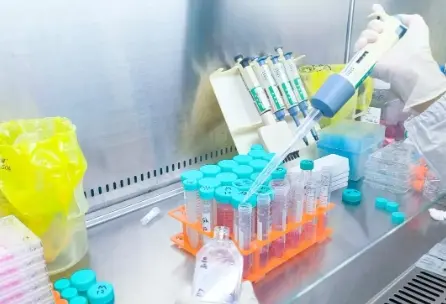
Sample Extraction and Media Replacement:
1. Perform aseptic procedures to prepare the samples and add the appropriate extraction medium based on the extraction ratio.
2. Extract the samples at 37°C for 24 or 72 hours according to the experimental protocol.
3. Also, prepare blank controls, negative controls, and positive controls as per the standard.
4. After extraction, replace the cell culture medium with the extracted solution as follows:
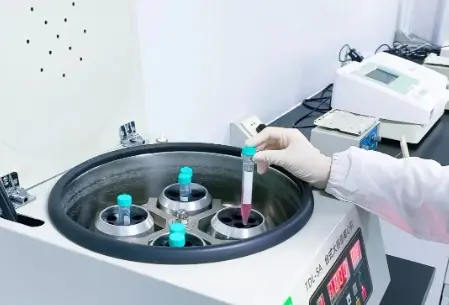
- MTT Method:
Discard the original culture medium, add the blank control extraction solution to the blank control group, the negative control solution to the negative control group, and the positive control solution to the positive control group. For the test group, add 100 µL of the sample extract at different concentrations (100%, 75%, 50%, 25%) to each well. After replacing the medium, continue to incubate for 24 hours in a CO₂ incubator.
- Direct Contact Method:
Discard the original culture medium, add 2 mL of fresh culture medium, and gently place the prepared sample on the central cell layer. After that, place it in a CO₂ incubator and continue to incubate for 24 hours.
- Indirect Contact Method:
Place blank control, negative control, positive control, and filter paper disks soaked in the sample extract in a culture dish as per the standard. Continue incubating in a CO₂ incubator for 24 hours.
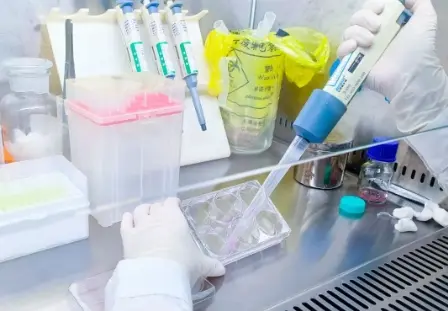
Result Observation (Measuring Absorbance):
- MTT Method:
After incubation, observe the cell morphology under a microscope. After observation, discard the extraction solution, and add 50 µL of a 1 mg/mL MTT solution to each well. Continue to incubate for 2 hours. Discard the MTT solution, add 100 µL of isopropanol, and shake the plate on a shaker for 10 minutes. Measure the absorbance at 570 nm and 650 nm using a microplate reader, calculate the relative proliferation rate (RGR), and determine whether the sample exhibits cytotoxicity according to the standard.
- Direct Contact Method:
After 24-hour incubation, observe the cell morphology, vacuole formation, cell detachment, lysis, and membrane integrity under a microscope, and determine the results based on the standard.
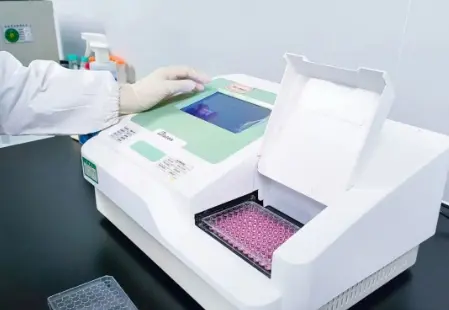
- Indirect Contact Method:
After 24-hour incubation, observe the cell morphology, measure the discoloration area, and determine the results based on the standard. In the filter membrane diffusion test, staining is performed at this stage.
Analysis of Causes for Cytotoxicity in Products
1. Raw materials of the product itself.
2. Presence of apparent cytotoxic substances in the product, such as drug-coated balloon catheters, coated catheters, and guidewires.
3. Suitability of the chosen test method for the product, e.g., gel-based, paste-like, or colored liquid products are not suitable for the elution method.
4. Whether the product exposed to the extraction medium alters the pH, such as a color change from pink to yellow after being added to the extraction medium.
5. Treatment of products with pre-filled liquids.
6. Residual amounts after ethylene oxide sterilization.
A positive cytotoxicity result does not necessarily mean the product cannot be applied clinically. The cytotoxicity result should be evaluated in combination with other test data, such as the physical and chemical characterization of the material, product composition, and intended use. If the test shows toxic results, further evaluation can be conducted, such as:
- Limitations of the test system
- Elution solution analysis (considering the adsorption properties of the sample, sterilization process adaptability, nanoparticle release, etc.)
- Dilution concentration response analysis
- Research on leachables
- Comparison with test results from equivalent products already on the market
- Other reasonable methods
References:
- GB/T 16886.5-2017 Biological evaluation of medical devices – Part 5: In vitro cytotoxicity tests
- iso 10993-5:2009 Biological evaluation of medical devices – Part 5: Tests for in vitro cytotoxicity
- GB/T 14233.2-2005 Test methods for medical infusion, blood transfusion, and injection devices – Part 2: Biological test methods
- YY/T 0127.9-2009 Biological evaluation of dental medical devices – Unit 2: Test Methods – Cytotoxicity test: Agar diffusion method and membrane diffusion method
Email:hello@jjrlab.com
Write your message here and send it to us
 What Are the Testing Items of California Propositi
What Are the Testing Items of California Propositi
 E-Cigarette EU TPD Testing
E-Cigarette EU TPD Testing
 Testing Certification for E-cigarettes Exported to
Testing Certification for E-cigarettes Exported to
 What is Amazon US CPC Certification?
What is Amazon US CPC Certification?
 UK Toy Safety Regulation Standard EN 71-13
UK Toy Safety Regulation Standard EN 71-13
 What is EU UFI Registration?
What is EU UFI Registration?
 EU UFI Registration for E-cigarette E-liquid
EU UFI Registration for E-cigarette E-liquid
 How to get the MSDS Report for Electronic Cigarett
How to get the MSDS Report for Electronic Cigarett
Leave us a message
24-hour online customer service at any time to respond, so that you worry!




